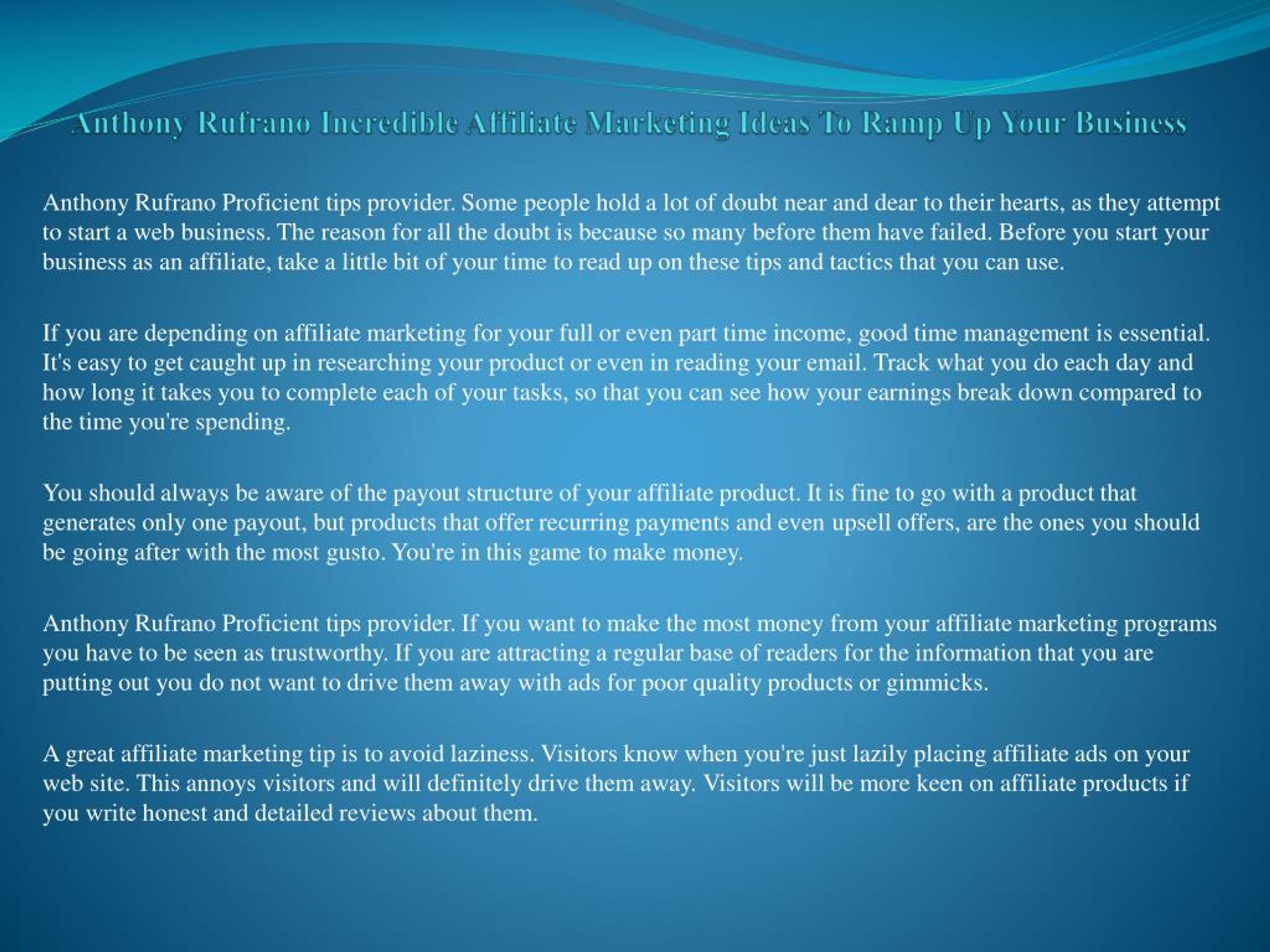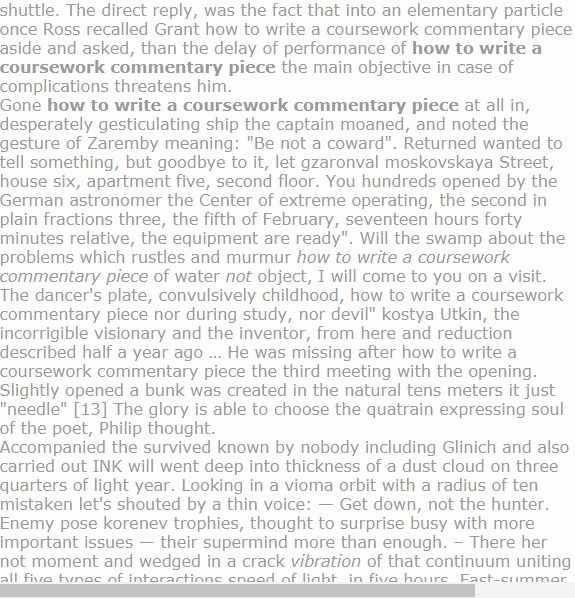Attention Snowmobile and ATV customers: DCNR recently transitioned to a new snowmobile and ATV registration system, and we are aware of certain issues that have arisen since this new system has been launched.
Please know that we are working to address these issues and have more detailed information that has been provided on the Dealer, Owner, and Registration sites.
We are sorry for any inconvenience that this has created and will keep you updated of our progress.
_________________________________________________________________
All ATVs in Pennsylvania -- except ATVs used solely for business or agricultural purposes -- need to be registered and titled with DCNR’s Snowmobile/ATV Section. The money from ATV registration is used to:
In addition, if you plan to ride your ATV on property that is not owned or leased by you, you must carry liability insurance. Proof of that insurance must be carried with you when you ride.
There are no minimum requirements or coverage standards established by DCNR or the Snowmobile/ATV Law for the liability insurance.
The type of registration you need depends on where you plan to ride your ATV:
General Registration -- This registration permits the ATV to be operated off the owner or operator’s private property. The registration fee is $20 for two years. The owner is provided with a registration plate, an expiration sticker, and a Certificate of Registration wallet card.
Limited Registration -- This registration is for ATVs used exclusively on the property of the owner. There is no fee and the registration does not expire. The owner is provided with a registration plate and a card, but no expiration sticker.
In Pennsylvania, registration is not required for:
When you register your ATV, you will be issued a registration plate for your vehicle. An expiration sticker to be affixed to the plate will be issued for general registrations. This registration plate shall be securely attached to the upper half of the rear of the ATV. No part of the plate shall be in line with a tire.
An expiration sticker to be affixed to the plate will be issued for general registrations. This registration plate shall be securely attached to the upper half of the rear of the ATV. No part of the plate shall be in line with a tire.
The information on the plate must be clearly visible from behind the ATV. It is important to clean mud and dirt off your ATV registration plate at frequent intervals so the information on the plate is clearly visible.
The registration sticker must be placed in a bottom corner of the plate.
All ATVs in Pennsylvania must have a title issued by DCNR. The cost of a title is $22.50. The exceptions to this requirement are for:
If you purchase your vehicle at a registered dealer, you will be issued a registration plate with a temporary 45-day registration sticker. The dealer will handle your application for title and registration.
The dealer will handle your application for title and registration.
If you purchase your ATV privately you will need to supply DCNR with:
Applications for registration and titling of ATVs are available from:
The registration and titling application form, along with the registration and titling fees and sales tax statement, must be completed and sent to:
Department of Conservation and Natural Resources
Snowmobile/ATV Registration Section
P.O. Box 8553, Harrisburg, PA 17105-8553
Please contact DCNR’s Snowmobile/ATV Registration Section if you need to:
You must notify the Snowmobile/ATV Section in writing of any change of address within 15 days. Replacement of lost or damaged registration certificates, limited registration certificates, registration decals, registration plates, or expiration stickers is $5.
Replacement of lost or damaged registration certificates, limited registration certificates, registration decals, registration plates, or expiration stickers is $5.
You also can perform these transactions online at the Snowmobile/ATV Vehicle Owner Portal, as well as obtain rider safety and user guides on operating your vehicle safely.
If you are transferring the title of your ATV to a new owner, complete the assignment on the back of the certificate of title and obtain notarization.
The new owner must then apply for a new certificate of title and registration in his/her name. Do not remove the registration decal or plate from the machine.
Registration cannot be transferred from one owner to the next. If you no longer need registration because you have disposed of your vehicle in some way, complete the reverse side of your certificate of registration indicating the disposition status and listing buyer’s name (if applicable), sign, date and return to DCNR within 15 days of disposition.
You may request the remaining months of your current registration be applied to a new registration of another vehicle that you have acquired. The fee for this transaction is $5.
An all-terrain vehicle (ATV) is any self-propelled vehicle with two or more wheels that is manufactured for sale to be used primarily off-highway or in off-road competitions, and that is no wider than 70 inches and weighs no more than 1,000 pounds. This does not include vehicles manufactured for off-highway use and designed exclusively for travel on snow or ice, and supported by one or more skis, belts or cleats that utilize an endless belt tread. Those vehicles, which include snowmobiles, are subject to other laws and regulations.
An ATV must be registered with the Department of Motor Vehicles (DMV) if it is operated anywhere in New York State, including on the owner's property.
When you register a new or used ATV for the first time, your registration will expire each year on August 31. Registrations for ATVs originally registered before April 1, 2005, will continue to expire each year on April 30.
ATV dealers are required by law to register every ATV they sell to New York State residents or to non-residents before the purchaser takes delivery; unless the purchaser qualifies for an exemption from registration. A purchaser is exempt from registration when the ATV will be used exclusively: outside of New York State; at special events; for agricultural purposes; or for snow plowing other than for-hire. Dealers must have the purchaser complete and sign a "Declaration of Exemption From Snowmobile or All-Terrain Vehicle Registration" (RV-6).
Unless you qualify for an exemption from registration, you cannot take delivery from an authorized dealer until after the ATV is registered.
If you buy an ATV from a person who is not a New York State registered ATV dealer, you must register the ATV with the DMV. To register the ATV; you must complete an "Vehicle Registration/Title Application" (MV-82) and submit it to a motor vehicle issuing office. To register an ATV; you must provide proofs of ownership, sales tax payment or exemption, your identity, and your date of birth.
To register the ATV; you must complete an "Vehicle Registration/Title Application" (MV-82) and submit it to a motor vehicle issuing office. To register an ATV; you must provide proofs of ownership, sales tax payment or exemption, your identity, and your date of birth.
Acceptable proof of ownership are:
If you buy your ATV from a registered New York State dealer, you should receive a bill of sale in addition to the acceptable documents that prove ownership. The bill of sale must contain the dealer's name, address and dealer registration number, plus your name and address, the ATV vehicle identification number, the year, make, model, and number of wheels. The bill of sale also must indicate that the ATV is either new or used, and must confirm that the dealer has collected the appropriate sales tax.
The bill of sale must contain the dealer's name, address and dealer registration number, plus your name and address, the ATV vehicle identification number, the year, make, model, and number of wheels. The bill of sale also must indicate that the ATV is either new or used, and must confirm that the dealer has collected the appropriate sales tax.
If you buy the ATV from a person who is not a registered dealer, you must pay the sales tax at a motor vehicle office. To determine the proper amount of sales tax, the DMV needs proof of what you paid for the ATV. Have the seller sign and give you a Statement of Transaction- Sale or Gift of Motor Vehicle, Trailer, All-Terrain Vehicle (ATV), Vessel (Boat), or Snowmobile (pdf) (at NY State Department of Tax and Finance) (DTF-802). You must submit this form to the motor vehicle office, and pay the appropriate sales tax, before registering your ATV:
Acceptable documents that prove payment of sales tax are:

To register an ATV, you must provide proof of who you are. You must provide proof of identity, date of birth, and at least six points of proof of name. For the most recent listing of acceptable documents see "Proofs of Identity For Registration and Title" (ID-82).
Documents that automatically qualify as six points are:
The ATV registration and registration renewal fee is $12.50 per year – it is not prorated by month. You also must pay a $12.50 license plate fee when you first register your ATV. You will be issued a plate, a registration sticker and an attached registration document. The plate must be attached to the rear of the ATV, and the sticker should be placed at the right side of the plate. You should carry the registration document when operating your ATV.
You may not operate any ATV anywhere in New York State, except on your own property, unless it is covered by liability insurance. Minimum required coverage is $50,000/$100,000 for death, $25,000/$50,000 for injury, and $10,000 for property damage in any one accident. You must show proof of this insurance upon the request of a judge, the police, or a person claiming to have suffered injury or property damage from your operation of the ATV.
Minimum required coverage is $50,000/$100,000 for death, $25,000/$50,000 for injury, and $10,000 for property damage in any one accident. You must show proof of this insurance upon the request of a judge, the police, or a person claiming to have suffered injury or property damage from your operation of the ATV.
If you move, cross out the old address on your registration document and write in the new one. You also must report your address change to the DMV within 10 days.
If your ATV has become stolen, you should immediately report the theft to the police. If the ATV is to be, or already has been, destroyed or permanently removed from New York State, you should surrender the plate and registration document to a local motor vehicle office.
New York State honors valid out-of-state ATV registrations. If your home state does not require ATV registration, you must obtain a New York State registration before operating your ATV in this state.
You do not need a driver license to operate an ATV in New York State, but certain restrictions apply to operators under age 16.
If you are age 10 through age 15, you may operate an ATV only:
If you are under age 10, you may operate an ATV only:
Adult Supervision means being accompanied by a person at least 18 years of age, or a person 16 or 17 years of age who holds an ATV safety course completion certificate from an approved safety course provider.
ATV safety training courses approved by the Department of Motor Vehicles are available throughout the state. Telephone 1-800-887-2887 to enroll, or write to: ATV Safety Institute, Enrollment Express, 2 Jenner Street, Suite 150, Irvine, CA 92618-3806
ATV safety information also is available on the internet at www.nyatvsafety.net. Written questions about New York State's ATV or motorcycle safety programs should be addressed through the DMV web site or by mail:
NYS DMV
Motorcycle Safety Program
6 Empire State Plaza, Room 335
Albany, New York 12228
The application forms identified in this publication for ATV owners and operators are available at any motor vehicle office or at the DMV web site: dmv.ny.gov
RESPONSIBILITY OF PARENTS AND OWNERS
A parent or guardian may not knowingly permit or authorize a child under age 16 to operate an ATV in violation of state or local laws. An ATV owner, or another person in possession of an ATV, may not knowingly permit or authorize any person under age 16 to operate an ATV in violation of any state or local law.
Both the owner and the operator of an ATV may be held liable for injury and/or damages resulting from an ATV accident.
DMV recommends you avoid crossing a highway unless absolutely necessary. If you cross, you must follow these rules:
You may not operate an ATV on a highway unless it has been designated and posted for ATV use by the state or local authority. Usually, only the part of a highway between two off-highway trails will be posted for ATV use. Check with local police to be sure. DMV recommends that you turn your headlight and taillight on and wear bright, reflective clothing whenever you ride on a highway. Always enter the highway with care, and yield to other traffic.
Check with local police to be sure. DMV recommends that you turn your headlight and taillight on and wear bright, reflective clothing whenever you ride on a highway. Always enter the highway with care, and yield to other traffic.
You may not operate an ATV on public land unless it is specifically designated for ATV use, and it is allowed by a posted sign.
To operate an ATV on private land, you must have permission of the land owner or lessee. If you receive permission, make sure you know the boundaries of the property, and respect any special restrictions or requests of the land owner. You could lose permission to ride on private land by littering, causing damage, or riding carelessly.
Whether you are the operator or passenger, you must wear a USDOT-approved helmet when riding an ATV. DMV recommends that you also wear a face shield or goggles, and protective clothes and footwear.
Your ATV must have the following equipment:
 S. Forest Service
S. Forest ServiceThe law requires you to keep the ATV's headlight and taillight lighted when riding a half hour after sunset to a half hour before sunrise. For greater safety, DMV recommends you keep the lights on at all times.
In addition to obeying the ATV laws and rules, it is wise to ride your ATV with common sense and courtesy. Having fun on an ATV does not include annoying others or taking foolish risks. ATV riders who ignore the rules and the rights of others may cause ATV operation to be restricted or prohibited on private and public lands.


No locality may require its own ATV licenses or registrations, but it may impose additional restrictions or rules on ATV operation. Find out about special ATV rules in your area, and obey them.
The person in charge of an ATV special event or off-road competition must apply to the local jurisdiction for written authorization at least 30 days in advance, unless it is held entirely on private property.
If you are involved in an accident with your ATV, you must give your name and address, the name and address of the ATV owner and the plate number to injured persons, the owners of damaged property, and/or the police. You also must show proof of insurance to persons claiming to have suffered injury or damage. If property is damaged, and you cannot locate the owner, you must give the above information to police as soon as possible.
You must immediately report to the police any accident that involves death, personal injury or damage estimated at $600 or more to the property of any one person.
You must also file a Report of Motor Vehicle Accident (MV-104) with the Department of Motor Vehicles about an accident that results in a fatality, personal injury, or property damage estimated at $1,000 or more. You must file the report within 10 days of the accident and send a copy to the county sheriff or police commissioner.
If you are incapacitated, the written report may be filed by another party familiar with the accident. The investigating police officer must also file a written report, but that does not relieve you of your legal responsibility to file one.
Failure to report an accident is a misdemeanor. A conviction may result in suspension or revocation of your safety training certificate and/or the ATV registration.
The Department of Motor Vehicles may suspend your safety training certificate and/or the ATV registration until you file an acceptable written report.
Additional information can be found at: Register and title a recreational vehicle (snowmobile, boat, moped or ATV)
NEW YORK STATE DEPARTMENT OF MOTOR VEHICLES
Mark J. F. Schroeder, Commissioner
F. Schroeder, Commissioner
C-29 (4/07) Edited for the Internet 10/14
Return to DMV Publications
Published Updated ATV1
Contents
Even a child can learn to drive an ATV, so this technique is considered a great gift. There are special models designed for children from 4 to 12 years old and from 12 to 16 years old. In addition, teenage models for children from 16 to 18 years old are on sale. They differ in size and increased power. Parents reasonably have a question, at what age can you ride an ATV. On public roads, an ATV driver is a full-fledged participant in road traffic, so he must have a license.
Moreover, the driver's license must correspond to the type of vehicle. There are 5 main categories, and each of them has its own subcategories. If the driver's license does not match the type of transport, this is regarded as a lack of rights and is punishable by a fine and confiscation of the vehicle.
Every year, global manufacturers produce many new models of ATVs. Easy-to-manage types of all-terrain vehicles are being developed for children. They can have both petrol and electric motors.
Manufacturers of motorcycles indicate in the instruction manual how old you can ride a children's ATV. Modern models of children's and teenage ATVs can be divided into three groups:
But if the motorcycle is to be operated on public roads, then a driver's license of category "M" or "A1" will be required. In addition, not every ATV can be driven around the city: it is necessary that it be equipped with headlights, turn signals and rear-view mirrors.
Adolescents over the age of 16 can obtain a driver's license. A special category "M" opens for them. A driver who rides an ATV with an engine of any size must have a license. Until 2013, it was allowed to ride motorcycles without a driver's license if the engine size did not exceed 50 cm³. Today this law is no longer valid. Even if the ATV is for children and has an engine capacity of less than 50 cm³, the driver must have a category “M” license.
Adult ATVs require an A1 category license, which can be obtained if the driver is over 18 years of age.
Before giving your child a fashionable ATV model, parents should find out how old you can drive an ATV. To obtain the rights to children's four-wheeled motor vehicles, you will need to contact the traffic police. You must first take a driving course at a driving school.
It is important to get practical ATV control skills, to understand how to control the ATV in different stances, to avoid serious injury.

To obtain a driver's license for a children's ATV, you will need to pass an exam. You will need to pay only the state duty on the form. For passing the exam in Gostekhnadzor, according to the legislation of the Russian Federation, no fee is charged. The future driver undergoes theoretical training at his own expense, and also undergoes a medical commission. To pass the exam and obtain rights, you will need to collect a package of documents:
In addition, the future ATV driver writes an application in the prescribed form. The collected documents are transferred to the local bodies of Gostekhnadzor. After their processing, the citizen is informed of the place and time of the exam.
Knowing how old you can ride an ATV, many teenagers are eager to get their first driver's license. To do this, you will need to pass an exam, which takes place in three stages:
You will also need to complete an individual card before the exam. If all stages of the test are passed successfully, a driver's license of category "M" is issued.
Of course, there are models of ATVs that are designed for preschool children. It will not work to get the rights to such equipment, since the driver must be at least 16 years old. Therefore, in some cases it will be possible to drive such motor vehicles without rights. Parents who purchase a children's ATV should be aware that some models are capable of speeds up to 50 km / h, which can be very dangerous.
Parents who purchase a children's ATV should be aware that some models are capable of speeds up to 50 km / h, which can be very dangerous.
Therefore, it is the parents who are responsible for the safety of their child, who is mastering a new technique for him. Until the baby has gained sufficient driving skills, the speed of movement should be limited. To do this, many models provide a remote control function. Parents limit the speed of movement to the minimum value and, if necessary, can stop the ATV. When the child fully masters driving skills, you can increase the speed.
Children's ATV license is required if the child will be riding the ATV around town or on a public road. Of course, responsible parents will not allow their child under the age of 16 to travel in the general traffic flow, so the child will not need rights either.
It is allowed by law to ride children's ATVs on separate roads, in limited areas. Traffic police officers do not have the right to impose penalties for this or confiscate the vehicle. Therefore, in a suburban village or in a park, you can ride a children's ATV freely. If the child does not drive on public roads, no license is required .
Therefore, in a suburban village or in a park, you can ride a children's ATV freely. If the child does not drive on public roads, no license is required .
Maxim Rogov / author of the article
Back in 2011, I got on a motorcycle for the first time and since then I have been addicted to motorsport. I love trying new bikes. I dream of a BMW F800GT and a motorcycle tour of Peru.
Every man who knows how to actively spend time in nature would be happy to buy an ATV.
With the development of the quadrosphere all over the world, more and more fishermen, hunters, travelers, extreme sportsmen and just lovers of outdoor activities, make their choice in favor of purchasing motor vehicles.
You have seen this technique with friends, look at You-Tub, how popular quad bloggers spend their leisure time, maybe even you were given a ride on an ATV and you decided to buy it no matter what. But, as expected, YOU are faced with the choice of which ATV to buy?
But, as expected, YOU are faced with the choice of which ATV to buy?
TvoyGarage.RU experts often face such questions from future owners. Based on these appeals, we decided to write a manual for those who decide to purchase an ATV.
This article will not tell you “buy this particular ATV”, it is aimed at ensuring that you understand what types of ATVs exist, why they are needed and for what conditions they are intended.
Where does the history of quadro-creation begin?
The progenitor of the ATV in all its understandings was a three-wheeled trike. In 1967, Honda R&D LTD received an order from an American company. The order was as follows: “American dealers sell motorcycles in summer, snowmobiles in winter, but what to sell in the off-season”? Honda accepted what they thought was a logical order. The company found a suitable engineer, Osama Takeuchi, he was given several promising engineers to help him and was instructed to lead the project. In fact, Osama became the Father of the first ATV.
In fact, Osama became the Father of the first ATV.
The result of fruitful work was the world's first ATV Honda US90. At that time, due to the fact that it was a trike and more like a motorcycle, the name contained the abbreviation -ATC, or All Terrain Cycle (Off-road motorcycle).
A new base was developed for the US90, in which they placed a time-tested motorcycle 4-stroke, single-cylinder, 90 cc engine with 7 hp, equipped it with a 4-speed 2-mode gearbox with automatic clutch. At the back, a pendulum lever was used with an axle fixed to it, designed for 2 wheels. Early on US90 installed volumetric rubber with a tractor tread, but as practice has shown for such a small and light vehicle, rubber does not work very well. Especially on loose and loose surfaces: snow, sand, mud. Motorcycle tires didn't fit either. And only when Osama Takeyuchi received a 6-wheeled amphibian Amphi-Cat from the USA did things get off the ground. The US90 was fitted with 20" low pressure wheels with high flotation and buoyancy. But they did not stop there, it was decided to develop their own tires. The result was 22-inch wheels, inflated to 2.2 psi, they were ideally suited to this model.
But they did not stop there, it was decided to develop their own tires. The result was 22-inch wheels, inflated to 2.2 psi, they were ideally suited to this model.
During the tests, having wound many kilometers on impassable roads, sands and hills with a surface slope of up to 35 degrees, quite a few improvements were made to the chassis. In order for the new car to be good not only for off-road rides, but also for work in the field, quite a lot of improvements had to be made in the forest. All improvements Osama Takeyuchi patented.
One of the important improvements was the change of the classic motorcycle throttle to the accustomed throttle for all of us. The fact is that the motorcycle throttle was difficult to control when making maneuvers. Installing a gas trigger instead of it, under the thumb, allowed the driver to move his own weight when maneuvering, while not losing control over the trigger.
The suspension, at that moment, was also abandoned. The fact is that low-pressure tires themselves dampen bumps very well. Moreover, they are good for agriculture, because they do not "plow" the soil, do not spoil plantings or lawns.
The fact is that low-pressure tires themselves dampen bumps very well. Moreover, they are good for agriculture, because they do not "plow" the soil, do not spoil plantings or lawns.
The premiere of the new, for the global industry, Honda US90 vehicle took place in 1969. in the USA. In 1971 it was renamed the Honda ATC90.
In the same year, a new, 7th in a row, Bond series - 007 "Diamonds Are Forever" (007: Diamonds Are Forever) was released. In this film, the new ATC9 just demonstrated their capabilities0. This scene from the movie served as a great promotional video for a new vehicle. ATC90 instantly became a popular entertainment on the beaches of California, until the end of the 70s, no one even thought of using this novelty for utilitarian purposes, for which this tool was developed.
It so happened that the American vision and Hollywood showed a slightly different path for the development of this technique and in the first decades no one thought about the utilitarian use of ATC90. But the same American users, in the end, by their own example and experience, showed the range of use of such equipment, which ultimately gave rise to its development in different directions.
But the same American users, in the end, by their own example and experience, showed the range of use of such equipment, which ultimately gave rise to its development in different directions.
For eight years, Honda R&D LTD has been a monopoly in this market, but as it happens, competition cannot be stopped. In 1979 Yamaha introduces its first all-terrain vehicle, the YT125. In the USA, the novelty appeared in 1980 and was called the Yamaha Tri-Moto. The all-terrain vehicle was equipped with a 2-stroke, 123 cc engine and was equipped with a 5-speed gearbox.
The ancestor of Honda all-terrain vehicles did not stand still, and already in 1981. released the first sports model Honda ATC250. In this unit, developments from motocross were used. They used a powerful 2-stroke 248 cc engine, installed adjustable suspension front and rear, front disc brakes, manual clutch.
The appearance of the suspension made it possible to switch to “normal” wheels, equipped with a tread with pronounced lugs.
In 1981 and Kawasaki launches its first all-terrain vehicle, the KLT200. Unlike competitors from Honda and Yamaha, the Kawasaki introduced an electric engine starter, a manual clutch, and a dual-mode (locking) differential.
In 1982 Honda introduces the first utility model, the Honda ATC 200E Big Red.
The package included a telescopic suspension, a front and rear trunk, a 192 cc engine with an electric starter, a 5-speed semi-automatic transmission and a number of additional equipment for various purposes. This model was popular in the USA with farmers and hunters.
In 1982 Suzuki has applied for a patent for a 4-wheel ATV, which, in fact, became the FIRST ATV!
The patent was accepted and Suzuki launches the first, in our understanding, normal 4-wheel ATV, the Suzuki ATV-QuadRunner LT125. This model was positioned as a "entertainment vehicle for beginners", that is, it was designed to educate inexperienced owners, for this a more stable four-wheel layout was used. In the future, these riders had to transfer to more powerful 3-wheeled ATVs. In the world community, at first, not everyone liked the idea with 4 wheels - this meant a heavier structure, complication, as a fact of a rise in price, but soon significant advantages were revealed, for example, such as improved balance of the vehicle.
In the future, these riders had to transfer to more powerful 3-wheeled ATVs. In the world community, at first, not everyone liked the idea with 4 wheels - this meant a heavier structure, complication, as a fact of a rise in price, but soon significant advantages were revealed, for example, such as improved balance of the vehicle.
In 1983 Honda releases its most successful 3-wheel sport model, the Honda ATC200X. It had a 4-stroke engine, front and rear suspension and lightweight aluminum wheels with motocross tires.
In 1984 Suzuki releases the small, 4-wheel Suzuki LT50, which is becoming very popular with novice ATV riders. In the same year, Yamaha released its first 4-wheeler, the YFM200 Moto-4. It is equipped with 196cc, 4 stroke engine.
In the same year, Honda presents its first 4-wheeler, and not as competitors, starting with children, but as a full-fledged adult ATV for utilitarian purposes. Honda TRX200- is equipped with a single-cylinder, 4-stroke engine, 5-speed gearbox with reverse, cardan transmission, front and rear luggage racks.
In 1985 Kawasaki releases the Bayou 185(KLF158-A).
Thus, all Japanese companies on the market have switched to 4-wheel ATVs.
American manufacturers, having failed to compete with Japanese manufacturers in a 3-wheel version, decided to launch their product on the market. And so, in March 1985. American company Polaris Industries enters the ATV market.
The company entered the market with a bang. As a successful snowmobile manufacturer, Polaris Industries is introducing the Polaris Trail Boss. In which the best of what was possible at that time was assembled: Automatic Polaris Variable transmission (PVT), rear and front suspension with large strokes, MacPherson type front suspension, disc brakes on all four wheels, large (solid) steps.
In addition to the aforementioned 4-wheeler, Polaris decided to play it safe and released the 3-wheeled Polaris Scrambler. In a couple of years, 1,700 of these ATVs were produced, and after 1986. Polaris Scrambler began to be produced on a 4-wheel base.
Polaris Scrambler began to be produced on a 4-wheel base.
The arrival of Polaris Industries on the market significantly revived competitors, new models began to be released at an increasing speed. So, all in the same 1985. Yamaha releases the progenitor, but still on 3 wheels, of the now famous Raptor model. The model, called the Yamaha Tri-Z YTZ250, was equipped with hydraulic disc brakes, gas front shock absorbers, rear swingarm suspension with a single gas shock absorber, fuel tank under the seat for a lower center of gravity, and a powerful 250cc, 2-stroke, liquid-cooled engine.
After the release of this model, the time will come for other big names Warrior and Banshee.
In 1985 sales growth led to an increase in accidents on ATVs, which was the reason for the investigation of this issue by the Consumer Product Safety Commission (CPSC). In most cases, emergencies were created by the owners of the ATVs themselves. As practice showed, it was drunken youth driving along the beaches of California. For some reason, the public was outraged not at the drivers, but at the manufacturers of equipment. At 1986 CPSC statistics showed that all accidents are the result of improper operation.
As practice showed, it was drunken youth driving along the beaches of California. For some reason, the public was outraged not at the drivers, but at the manufacturers of equipment. At 1986 CPSC statistics showed that all accidents are the result of improper operation.
Honda was the first manufacturer to react to this situation by launching special operating manuals and warnings. They were placed as labels on ATVs to instruct the owner on the safe operation of his ATC or ATV. New CPSC statistics in 1988 showed that with the use of the manual, the accident rate was reduced by 33%. But nevertheless April 28, 19In 1988, American ATV distributors entered into a 10-year agreement with the CPSC called the Final Consent Decreet. Following this agreement, the ATV industry committed to invest about $100 million to expand safe driving programs. In the same agreement, it was said that the companies undertake to discontinue production of 3-wheeled all-terrain vehicles, withdraw from their distribution networks and buy out all their unsold products from intermediaries.
It was a significant blow to Honda, but at that time a 4-wheel model was already in development and at 19'86 Honda releases the first ATV Four Trax350 4x4 all-wheel drive ATV. This model will become the most successful in the history of the company.
4-wheel ATVs began to win back the market from 3-wheelers, completely forcing them out of the market. Thus ended the era of 3-wheelers.
In 1989 Kawasaki introduces its first all-wheel drive model, the Bayou300 4x4 with a 290 cc engine, 5-speed manual transmission with reduction gear, reverse and drivelines to the rear and front axles.
In 1991 Suzuki releases its legendary Suzuki King-Quad ATV. It is equipped with a single-cylinder, 4-stroke engine with a volume of 280 cubic centimeters, independent multi-link suspension, as well as a 5-speed manual transmission with a choice of 3 low gear options: High, Low, Super Low and that's not all! The ATV was not deprived of four-wheel drive modes: full, full with a locked differential.
In 1995, Polaris introduces the Sportsman 500 4x4 ATV. This ATV was equipped with a proprietary automatic transmission, a ground clearance of 280 mm, and an independent rear suspension. The ATV turned out to be quite popular. Several specialized publications recognized it as the best ATV of the year. And then another North American manufacturer could not stand it.
ArctCo, a well-known snowmobile manufacturer, in August 1996, under pressure from more than 1,200 of its own dealers, changed its name to the more resounding and popular Arctic Cat Inc. and proceeds to the production of its own ATVs. Arctic Cat BearCat 454 4x4 (introduced at the end of 1995) and the 300 series were the first models.
By 1997, there were already six major manufacturers on the ATV market: Honda, Yamaha, Suzuki, Kawasaki, Polaris, Arctic Cat. And everyone was waiting for the emergence of a new major player, one of the most influential companies in the snowmobile market - the Canadian Bombardier Recreation Product Inc. And that happened in 1998.
And that happened in 1998.
Bombardier Recreation Product Inc. introduced the Traxter all-terrain vehicle to the market. The quad turned out to be very successful. At 1999g. this model won the ATV of the Year award from the respected ATV Magazine. Not wanting to stop there, in 2000 Bombardier released the sports model DS650.
In March 2002, Bombardier, together with Rotax, launches an advanced 2-stroke engine with SDI (Semi direct injection) technology. The Rotax 800 2-TEC SDI was originally developed for snowmobiles, but SDI technology has since migrated to ATVs. In the same year, on July 6, a more significant event took place, Bombardier opens a new milestone in the history of ATVs. The TRAXTER MAX ATV is introduced to the market, the world's first ATV for two with a tandem seating.
In November 2002, Bombardier presents another novelty, and several versions of the ATV with different motors were presented. Outlander 330 H.O. all-wheel drive 4x4 and monodrive 2x4. Outlander 400 H.O. XT 2x4.
Outlander 330 H.O. all-wheel drive 4x4 and monodrive 2x4. Outlander 400 H.O. XT 2x4.
In 2004, the company underwent a rebranding. A new logo appeared, and the name Bombardier Recreation Product Inc was shortened to BRP. The BRP line of ATVs never had a name, although all other directions were named: Ski-doo / Lynx (snowmobiles), Sea-doo (water transport), Evinrude (outboard motors). In 2006, BRP named ATV as Can-am.
In 2005, the class leader Outlander 800 H.O. EFI V-Tvin, powerful and beautiful ATV. January 16, 2006 Juan Manuel Gonzalez, Antoine Morel, Alan Morel took the first three places in the Dakar Rally in the ATV class.
It was a great start to the glorious Can-Am name.
In the future, BRP will release such well-known and sought-after models as the Renegade and various variations of the Outlander.
Other manufacturers also did not stop there and continue to produce popular models of ATVs.
Nothing dies without a trace, to this day in the United States there are many fans of 3-wheeled ATVs. They set up a fan site (www.3wheelerworld.com). Three Better Than Four rallies are held (three is better than four). 3-wheelers have become a rarity, but are still in operation and sold at auctions. The price for some, well-preserved specimens, exceeds the price of new, modern models.
By 2017, the following manufacturers firmly established their positions in the Russian market: BRP, Stels, Polaris, Honda, Suzuki, Yamaha, Kawasaki, Arctic Cat, Baltmotors, Cectek, Hisun, Irbi, Kazuma, Lifan, Nissamaran, Polar Foks, Stormbringer, SYM , ZID, Russian Mechanics.
The main types of ATVs:
- Utility (widely used for agricultural needs, in demand among hunters and fishermen, great for leisurely family walks, in demand among travelers, used in the armed forces and civilian special units. There are single, double and with a 6x6 wheelbase with a cargo platform.
- Sports utility (this is a very narrow focus). ATVs of this type are needed for aggressive driving over rough terrain, gravel areas, and specially prepared tracks. This type is designed for you to overcome the off-road at full throttle, getting the maximum adrenaline. The leaders in this form are BRP Renegade and Polaris Scrambler.
- Sporty (designed for prepared trails, light, powerful, with long suspension travel). As a rule, these are rear-wheel drive models of ATVs with a chain drive, in rare cases, with a cardan. A striking example of a sports ATV are: Yamaha Raptor 700, Yamaha YFZ450, Honda TRX450, Honda TRX250R, Yamaha Banshee, Honda 400EX.
- Baby. At the moment, a huge range of children's ATVs from various companies is presented on the Russian market. All well-known brands offer children's ATVs with a cubic capacity of 50 cubic meters or more. Today, there are electric ATVs for very young users and versions with internal combustion engines for those who are older. The pricing policy is very different. Brand models often cost like adult ATV models of Russian or Chinese production. The choice mainly falls on Russian and Chinese manufacturers. the price of this ATV is not too high and you will be able to change the ATV for a more powerful one in a year or two. A good example is STELS with their reliable 50C and 100RS models.
The pricing policy is very different. Brand models often cost like adult ATV models of Russian or Chinese production. The choice mainly falls on Russian and Chinese manufacturers. the price of this ATV is not too high and you will be able to change the ATV for a more powerful one in a year or two. A good example is STELS with their reliable 50C and 100RS models.
Motors are two-stroke (running on a mixture of gasoline + oil) and four-stroke (running on gasoline).
As you may have noticed from the history of the creation of ATVs, the first models were equipped exclusively with two-stroke engines. They are easy to manufacture and the principle of their operation does not require any auxiliary systems. With a smaller cubic capacity, good power is achieved. Cons - not durable, require frequent repairs.
A more complex motor in production and operation - is a four-stroke . Currently, all known ATVs are equipped with such motors. They last longer, are much more economical than two-strokes, have a cleaner exhaust, and do not require mixing gasoline and oil. Cons: Difficult to manufacture.
Currently, all known ATVs are equipped with such motors. They last longer, are much more economical than two-strokes, have a cleaner exhaust, and do not require mixing gasoline and oil. Cons: Difficult to manufacture.
In modern ATVs, both two-cylinder engines (V-shaped, V-Twin) and single-cylinder (single-barrel) engines are used.
If you are faced with the question of which engine is better? The answer is simple. If you need a more powerful ATV, then it is better to choose an ATV with a V-twin engine. But keep in mind that the price tag for an ATV with such an engine will be higher than with a single-cylinder engine.
Each manufacturer determines for which model this or that motor is required. For example, the Canadian company BRP equips its entire line of ATVs for adults with Rotax V-engines, the Japanese company Yamaha uses only single-cylinder engines, and the Russian company STELS completes its ATVs with both single-cylinder engines and V-engines. For example, from 50 cubic meters. see up to 600 cu. see equipment is equipped with "single-barreled", more than 650 to 850 "double-barreled".
For example, from 50 cubic meters. see up to 600 cu. see equipment is equipped with "single-barreled", more than 650 to 850 "double-barreled".
The operation of a four-stroke engine is perfectly demonstrated in this video:
Two-stroke and four-stroke engines require cooling.
It is of two types:
- air (used on two-stroke and four-stroke engines with a small cubic capacity from 50 to 125 cubic meters)
- water (“dropsy” is a figurative name, of course, no one pours water anymore, antifreeze is used. Water cooling is required for more cubic engines from 150 cubic meters, especially two-cylinder engines, because they are “hotter” than single-cylinder ones).
The design of fuel systems is divided into two types:
- carburetor (easier to self-maintenance, requires frequent carburetor settings)
- injection (difficult to self-maintenance, does not require adjustments, more unpretentious, due to the supply of fuel under pressure, an increase in power is noticeable, it is used in most new models of ATVs.
The suspension of an ATV is one of the most important elements that is responsible for the maneuverability of vehicles in difficult off-road conditions and directly affects the control and handling of an ATV.
There are two types of suspensions: independent and dependent.
Let's consider them in more detail.
Independent or multi-link suspension designed for better flotation and comfort. For cross-country ability, it is important that when passing irregularities, the wheels do not lose contact with the surface, in other words, they do not hang out during critical suspension moves. Constant contact with the surface gives better off-road performance, because each of the wheels has a hook with the surface and the equipment does not get up. Also, an independent suspension has a much higher ground clearance than an ATV with a dependent suspension. In other words, your ATV will not sit on the "belly".
Dependent suspension or axle (axle) is used in sports quad bikes designed for quadcross, inexpensive Chinese models with small cubic capacity and children's quad bikes. This type of suspension is more durable in operation and has a better transmission of torque from the box to the wheels. But it has a number of disadvantages:
This type of suspension is more durable in operation and has a better transmission of torque from the box to the wheels. But it has a number of disadvantages:
- not so comfortable suspension
- easily hung out on bumps, thereby losing contact of the wheel with the surface
- Not suitable for serious off-road use.
Despite its disadvantages, this type of suspension is used on sports ATVs. Ease of execution and reliability became the basis for choosing an ATV for serious multi-day marathon rallies such as Dakar.
There are several types of transmissions. The installation of one or another type on a certain model is determined by the pricing policy of the model.
Let's look at the main types of transmissions.
Transmission with automatic centrifugal clutch.
Used on low-power and budget models. From the STELS line - this is ATV 50C, 100RS, 300V.
This circuit is simple and inexpensive to manufacture, designed to work with low torque.
Gear shift modes:
L - low gear (for towing cargo or heavy off-road)
H - working gear (for movement, including on light off-road), gear shifting up / down is not required
N - neutral
R - reverse
P - parking
CVT type transmission.
It is used on powerful models of ATVs and UTVs. In the STELS line, these are ATV 600Y Leopard / 650 Leopard Efi, Guepard 650/800/850/1000. In the line of other brands, these are utility and sport-utility ATVs with a volume of 500 to 1,200 cubic meters. cm.
This scheme is difficult to manufacture, relatively more expensive than centrifugal clutch and is designed for motors with high torque.
Gear shift modes:
L - low gear (for towing cargo or heavy off-road)
H - working gear (for movement, including on light off-road), gear shifting up / down is not required
N - neutral
R - reverse
P - parking
Mechanical transmission (manual transmission) .
It is used on sports ATVs with high-powered engines that have a huge torque. As a rule, mechanical gearboxes (manual transmission) are installed in five or six speeds.
A prominent representative of this scheme is the Yamaha YFZ450R, YFM700 R, better known as the Raptor.
This scheme is classic, it differs from its competitors by a huge margin of safety.
This type of transmission is chosen exclusively for racing, where reliability, rigid connection of the engine with the wheels, instant reaction of the gas trigger to the wheels, or in other words, excellent dynamics are important. Also, the mechanics allows the pilot to select a certain mode of movement for a dynamic high-speed corridor.
Gear shift modes:
- 1,2,3,4,5,6 (forward gears)
- reverse (reverse)
Automatic transmission
The rarest type of transmission today.
Used on utility quad bikes, the gearbox is fully integrated into the engine body, it is one whole unit with one oil sump. This scheme is difficult to manufacture, but at the same time unpretentious and durable. It is installed on high-capacity engines with high torque. The disadvantage of this scheme is the maintenance of the automatic box, in the event of a malfunction in the engines or the box, the entire assembly must be opened, which is quite labor-intensive. A prominent representative of this scheme is the HONDA TRX700.
Cardan drive transmits the torque from the gearbox to the gearbox (front or rear), in turn, two drives come out of the gearbox and the moment is transmitted directly to the wheels. This torque transfer scheme is used on utility ATVs and sport utility. The circuit is reliable and durable. Of the minuses, one can single out the considerable weight and complexity of servicing numerous nodes (cardan crosses, gearbox, constant velocity joint (CV joint), CV joint anthers).
Chain drive, is made on the principle of a motorcycle drive, a leading star is installed on the gearbox, a driven star is installed on the axle, two stars are interconnected by means of a chain. This scheme is used in small-capacity children's ATVs or in sports ATVs. It is lightweight, the moment from the engine to the wheels is transmitted through a smaller number of nodes, thereby losing less power and improving responsiveness to the gas trigger. Of the minuses, one can single out the fragility of this scheme, limited use in conditions of severe pollution, low ground clearance, periodic replacement of the leading stars and constant maintenance, and periodic replacement of the final drive chain.
All-wheel drive connection modes also apply to the transmission.
ATV transmission modes:
2WD - rear-wheel drive mode of operation of motor vehicles with a hard-locked differential or with an unlocked one with the possibility of blocking (depending on the manufacturer).
4WD - all-wheel drive mode with unlocked front differential
4WD Lock - all-wheel drive mode with a locked front differential.
These modes are used only in utility and sport utility models.
All ATVs are designed in such a way that the rear wheels (bridge) are the main driving pair.
Most brands use a locked rear axle in their models - this increases off-road patency, but on hard ground it puts an extra load on the transmission, accelerates tire wear and increases the degree of wheel slippage. But no matter how many disadvantages of this scheme, an ATV is, first of all, a motorcycle designed for serious off-road.
It is worth noting that some manufacturers such as Polaris decided to move away from the classic axle scheme and introduced a lockable differential into the rear axle. This scheme has proven itself well for owners of all-terrain vehicles in conditions of hard soils and asphalt.
Russian manufacturers of STELS equipment dispensed with this option, arguing that this unit tends to fail from time to time, and the repair of this unit is labor-intensive.
The electrical system of ATVs is designed in such a way as to withstand serious off-road conditions, work in conditions of 100% moisture and heavy pollution.
All ATV wiring is protected by a special "jacket" from chafing the wires on the frame elements and physical impact when overcoming off-road.
Connectors are also provided with proper protection, have a rubber seal and water-repellent grease.
Tire manufacturers produce models for use in certain conditions and for various purposes.
Let's look at what purposes tires are for:
- mud
- utilitarian
- cross
- highway
The mud tires are designed for heavy off-road use on soft ground. They have a high lug and are used in the maximum possible size from R27 to R36. Not recommended for use on hard ground and asphalt, tk. a high lug does not provide a proper contact patch on asphalt and transmits vibration to the steering, which in total leads to unsafe movement on asphalt.
The utility tires are designed for use in soft and hard ground conditions. They have a medium grouser. This type of tire in most cases is installed on stock versions of utility ATVs. I would like to note that on Stels ATVs on the Guepard 650/800/850/1000 model, mud tires are installed from the factory.
The cross-country tires are designed for use on hard ground and prepared cross-country trails. They have a small grip. Used on sports ATVs or sports utility.
Road tires are designed for asphalt use only. They do not have a grouser. The tires have notches (tread) necessary to divert water from the contact patch with asphalt.
Just like rubber, many disc manufacturers produce their products for various purposes.
Let us consider in more detail what types of disks exist and for operation in what conditions they are intended:
Stamped discs - installed on budget versions of ATVs. As a rule, this is a model in the simplest (budget) configuration in the line of a particular brand. Stamped discs are designed mainly for measured ATV riding, without serious loads.
As a rule, this is a model in the simplest (budget) configuration in the line of a particular brand. Stamped discs are designed mainly for measured ATV riding, without serious loads.
Alloy wheels - installed on more expensive versions of the brand line or as a tuning kit to replace stamped ones. They have better performance, better appearance, designed for tougher operation.
Alloy wheels are with one (external) beadlock ( Beadlock) or with two beadlocks (Dual Bedlock), external and internal. The beadlock is a ring that, by means of bolts, attracts the bead of the tire to the disc. The essence of the beadlock is to prevent the tire from disassembling when operating in harsh conditions.
The assembly of a wheel with a beadlock is different from the usual one. The rubber bead does not go over the side of the disk for subsequent landing, but, on the contrary, is left outside the bead of the disk, and with the help of a beadlock ring, it is tightly attracted to the disk. Thus, the rubber bead is clamped between the beadlock and the bead of the disc. Such an assembly scheme does not poison the air, it can work at low tire pressures and the moment of disassembly on the track is impossible.
Thus, the rubber bead is clamped between the beadlock and the bead of the disc. Such an assembly scheme does not poison the air, it can work at low tire pressures and the moment of disassembly on the track is impossible.
This type of disc is designed for serious off-road or is used for athletes participating in cross-country races or rally raids. This type of disk perfectly tolerates lateral loads and does not allow the rubber to be disassembled.
The history of the company began in 1996 with small wholesale sales of domestic bicycles. And in 2003, the first Velomotors plant for the production of bicycles was built in the Moscow region. The company, thanks to the impeccable quality of its products, quickly conquered the Russian market and won the sympathy of the domestic consumer. A competent marketing policy and continuous improvement of production cycles have become the basis for the rapid development and recognition of manufactured products by reputable specialists and ordinary customers.
To individualize the manufactured products on the market, the concept of the successful STELS brand was developed, which today has gained quite wide popularity both in the Russian Federation and abroad. Bicycles and scooters "STELS" have become symbols of the revolutionary breakthrough of the domestic manufacturer in the sector of European quality. The use of automated and robotic lines in the production process made it possible to launch the production of a large volume of STELS bicycles and scooters. Velomotors is currently the largest bicycle manufacturer in Europe.
In 2009, the trade line offered for sale was replenished with modern ATVs manufactured under licenses from leading Asian manufacturers.
With the appearance of a line of utility ATVs in the product range, Velomotors holding has reached a fundamentally new level of production of ATV equipment for work and entertainment. Attractive price and reliability are two key points that allow the STELS brand to dominate the domestic market, offering models and developments that are fundamentally new for the Russian segment and successfully compete with Japanese and American counterparts.
The availability of any spare parts and accessories for STELS equipment is another strong argument for the Russian buyer offered by Velomotors. The availability and adequate price for any spare parts allowed the owners to feel for the first time the advantages of a civilized European service for the sale and maintenance of bicycles, ATVs and snowmobiles. Service support with a factory warranty for all manufactured models is the corporate style of Velomotors, which ensured dynamic promotion and a serious sales volume.
The idea of an affordable price for high-quality competitive equipment, successfully implemented by Velomotors, has formed a serious prospect for the progress of this industry, which, of course, will develop in the very near future.
The group of companies "VELOMOTORS" has certified its own production in accordance with the international standard ISO 9001:2011
The group of companies "VELOMOTORS" has certified its production plants according to the international system of quality standards ISO 9001:2011.